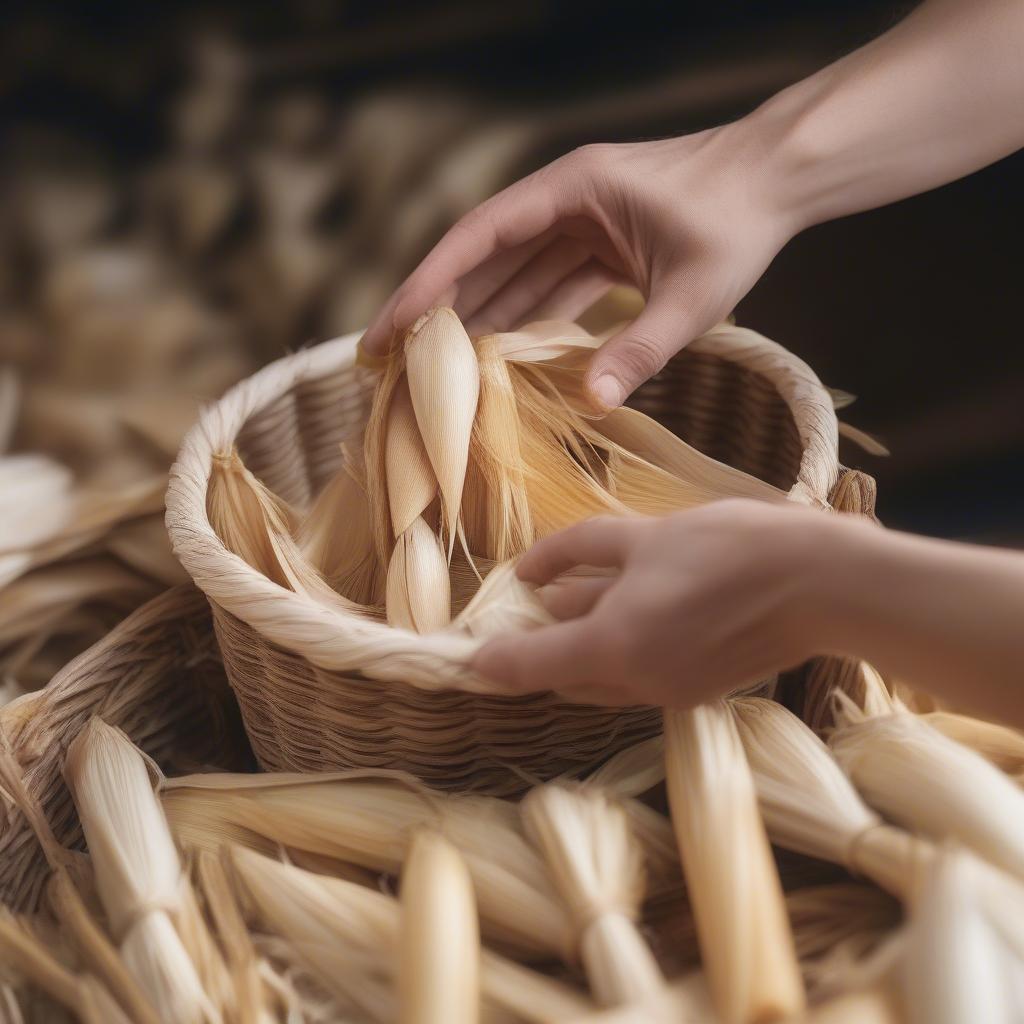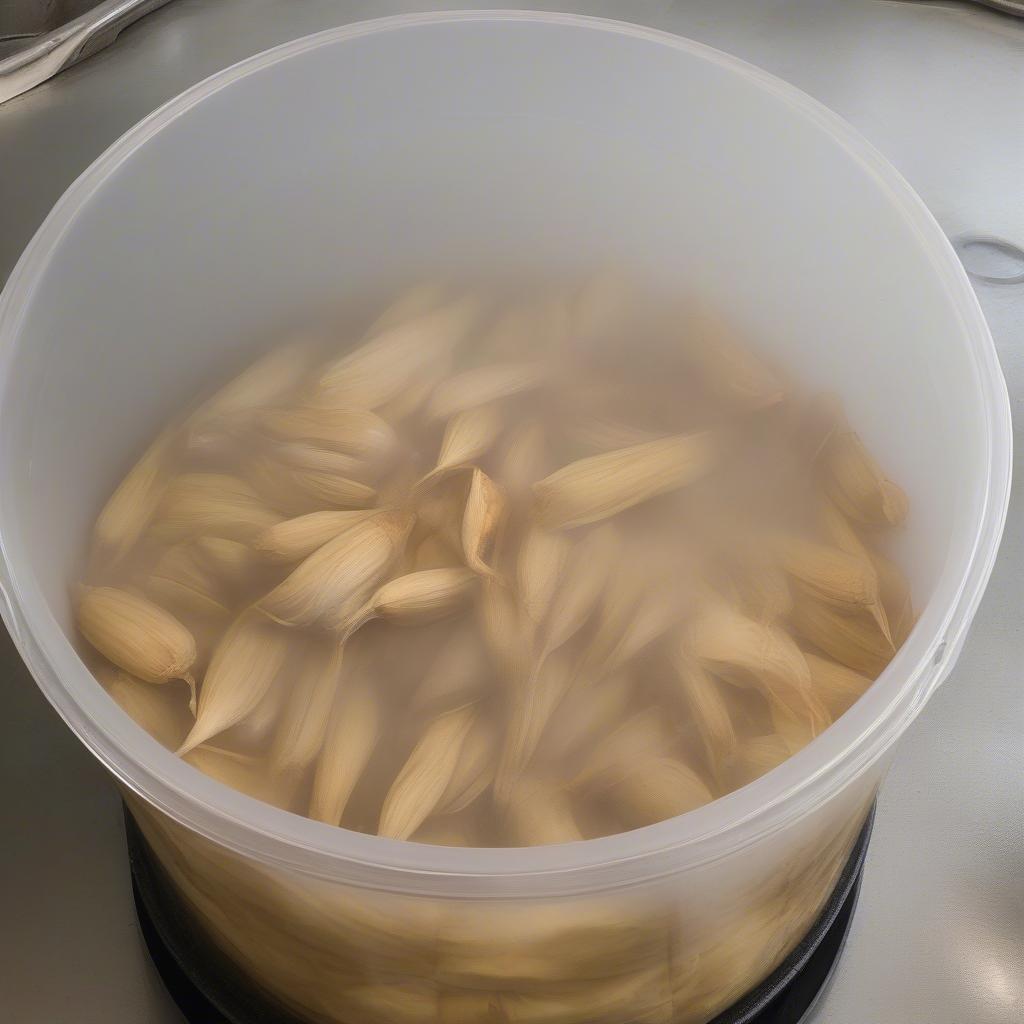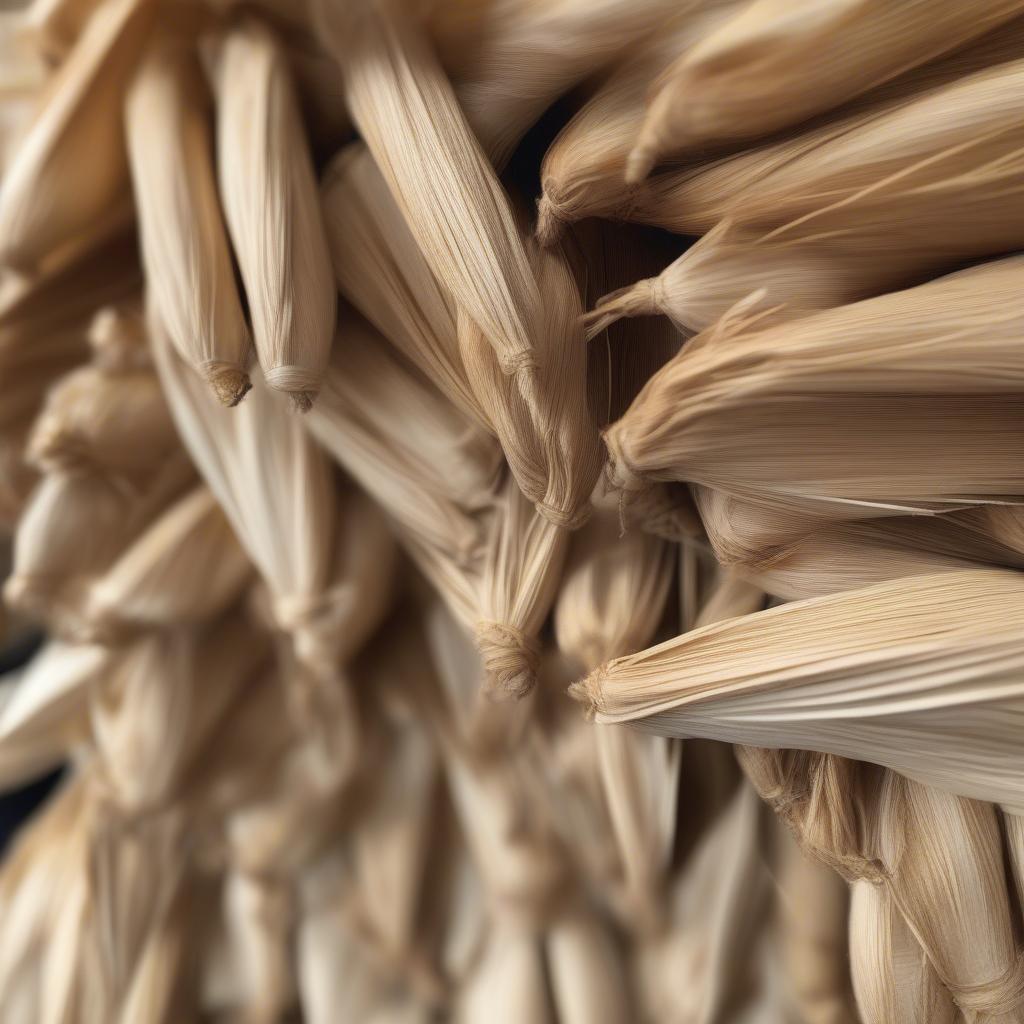Basket Weaving
How to Prepare Cornhusks for Basket Weaving
Preparing cornhusks correctly is the first step to creating beautiful and durable cornhusk baskets. This guide will walk you through the process, from selecting the right husks to storing them for future projects.
Choosing the Right Cornhusks
Not all cornhusks are created equal. For basket weaving, you want husks that are pliable, free of blemishes, and relatively uniform in size. Look for husks that are a light tan or creamy color, avoiding those that are brittle, discolored, or have signs of insect damage. Freshly harvested husks are ideal, but dried husks can also be used with proper preparation.  Selecting Cornhusks for Basket Weaving
Selecting Cornhusks for Basket Weaving
Soaking and Softening Cornhusks: A Step-by-Step Guide
Before you can begin weaving, the cornhusks need to be softened to make them flexible and easy to work with. Here’s a detailed guide on how to achieve this:
- Gather your materials: You’ll need a container large enough to hold your cornhusks, hot water, and a weight (such as a plate or a bowl).
- Fill the container: Pour hot, but not boiling, water into the container. Boiling water can make the husks brittle.
- Submerge the husks: Place the cornhusks in the water, ensuring they are fully submerged.
- Weigh them down: Place a weight on top of the husks to keep them submerged throughout the soaking process.
- Soak time: Allow the husks to soak for at least 30 minutes, or up to a few hours, depending on their dryness. You’ll know they’re ready when they feel soft and pliable.
 Soaking Cornhusks in Water
Soaking Cornhusks in Water
“Soaking is crucial,” explains renowned basket weaver, Amelia Carter, “It transforms stiff, unusable husks into supple, weaving-ready material. Don’t rush this step!”
Drying and Storing Cornhusks
Once your cornhusks are softened, you need to dry them properly to prevent mold growth. Lay them flat on a clean towel or hang them to dry in a well-ventilated area, away from direct sunlight. Once dry, store them in a cool, dry place in an airtight container or bag to maintain their flexibility.
Troubleshooting Common Cornhusk Preparation Issues
- Husks are too brittle after soaking: You likely used boiling water. Try again with hot, but not boiling, water.
- Husks are still stiff after soaking: Try soaking them for a longer period, or add more hot water to the container.
- Husks develop mold: Ensure the husks are completely dry before storing them. Store them in a dry, airtight container.
What Water Temperature is Best for Soaking Cornhusks?
Use hot, but not boiling, water. Boiling water can damage the fibers and make the husks brittle. Aim for a temperature between 180-200°F (82-93°C).
How Long Should I Soak Cornhusks for Basket Weaving?
Soak cornhusks for a minimum of 30 minutes. For older, drier husks, you may need to soak them for several hours. The key is to soak them until they become soft and pliable.
“Remember,” adds Amelia Carter, “the exact soaking time depends on the husks themselves. Feel them regularly to gauge their readiness.”
 Dried Cornhusks Ready for Weaving
Dried Cornhusks Ready for Weaving
How to tell if Cornhusks are Ready for Weaving
Cornhusks are ready for weaving when they are soft, pliable, and easily bend without breaking. They should feel almost like leather.
In conclusion, properly preparing cornhusks for basket weaving is essential for creating beautiful and long-lasting baskets. By following these steps, you can ensure your cornhusks are ready for your next weaving project.
FAQ
- Can I use store-bought cornhusks? Yes, but ensure they are intended for crafting.
- Can I reuse soaked cornhusks? Yes, if they are dried and stored properly.
- What can I do with leftover cornhusks? Use them for other crafts or compost them.
- Where can I buy cornhusks for weaving? Craft stores, online retailers, or farmers markets.
- How do I dye cornhusks? Natural dyes like onion skins or berries can be used.
- What type of basket can I make with cornhusks? A variety, from simple coasters to intricate baskets.
- Are there any other materials I can weave with? Yes, consider exploring materials like willow, reed, or raffia.
Want to learn more? Check out our articles on different basket weaving techniques and other natural materials.
Contact us for support at Hanoi, Vietnam or Tech Avenue, Suite 12, San Francisco, CA 94105, USA. We have a 24/7 customer support team.
